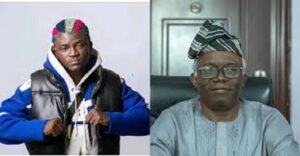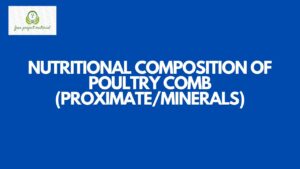TABLE OF CONTENTS
Title Page – – – – – – – – – i
Certification – – – – – – – – – ii
Dedication – – – – – – – – – iii
Acknowledgments – – – – – – – – iv
Table of Contents – – – – – – – – v
CHAPTER ONE
INTRODUCTION – – – – – – – – 1
CHAPTER TWO
2.1 Types of Biological Oxygen Demand – – – – 1
2.1.1 Carbonaceous Biological Oxygen Demand (CBOD) – – 6
2.1.2 Nitrogenous Biological Oxygen Demand (NBOD) – – 8
2.2 Methods for Measuring Biochemical Oxygen Demand – 10
2.2.1 Dilution method – – – – – – – 11
2.2.2 Manometric method – – – – – – 13
2.3 Sources of Biological Oxygen Demand – – – – 14
2.4 Pollution and its Effects on Biochemical Oxygen Demand – 15
CHAPTER THREE
3.1 Significance of Biological Oxygen Demand – – – 17
3.2 Uses of Biological Oxygen Demand – – – – 20
3.3 Effect of High Biological Oxygen Demand on
the Aquatic Ecosystem – – – – – – 21
3.4 Methods of Reducing Biological Oxygen Demand in Water – 22
3.5 Usage of Biological Oxygen Demand in Sewage
Treatment Plants – – – – – – – 24
CHAPTER FOUR
SUMMARY AND CONCLUSION
4.1 Summary – – – – – – – – 26
4.2 Conclusion – – – – – – – – 27
References
CHAPTER ONE
INTRODUCTION
Biological Oxygen Demand (BOD) provides a measure of the impact of a waste (water) on the oxygen content in a receiving water body. Wastes is organic matter, (food) that are decomposed, oxidized, metabolized by microbial organisms which are mostly (aerobic bacteria). They are frequently referred to as “bugs”, because they require oxygen for this monumental effort. BOD is an estimate of the metabolic fuel available in a sample. The more “food” present in a sample the more oxygen that will be required and the higher the BOD, the more rapidly oxygen is depleted from a water body. This means less dissolved oxygen (DO) is available to aquatic organisms who then become stressed, suffocate, and die. In other words, BOD gives an indication of the degree of which water is polluted (Titze and Walter, 2008).
BOD is commonly required testing for wastewater treatment plants to measure waste loads, efficiency and effectiveness of BOD removal, control of plant processes, and most importantly the concentration of the effluent that is discharged to water bodies. Dissolved oxygen (DO) is measured at the beginning of the analysis and after a 5 day, in-the-dark, 20oC incubation period. The difference of the DO between the beginning and end of analysis is used to calculate the BOD (Connor, 2016).
The BOD test is a bioassay. Bioassay is a shorthand form, commonly used term for biological assay and is a type of in-vitro experiment. Bioassays are typically conducted to measure the effects of a substance on a living organism. Bioassays may be qualitative or quantitative, the latter often involving an estimation of the concentration or potency of a substance by measurement of the biological response that it produces.
The stream system both produces and consumes oxygen. It gains oxygen from the atmosphere and from plants as a result of photosynthesis. Running water, because of its churning, dissolves more oxygen than still water, such as that in a reservoir behind a dam. Respiration by aquatic animals, decomposition, and various chemical reactions consume oxygen.
Wastewater from sewage treatment plants often contains organic materials that are decomposed by microorganisms, which use oxygen in the process. The amount of oxygen consumed by these organisms in breaking down the waste is known as the biochemical oxygen demand or BOD. Other sources of oxygen-consuming waste include stormwater runoff from farmland or urban streets, feedlots, and failing septic systems. Oxygen is measured in its dissolved form as dissolved oxygen (DO). If more oxygen is consumed than is produced, dissolved oxygen levels decline and some sensitive animals may move away, weaken, or die (Eaton et al., 2005).
DO levels fluctuate seasonally and over a 24-hour period. They vary with water temperature and altitude. Cold water holds more oxygen than warm water and water holds less oxygen at higher altitudes. Thermal discharges, such as water used to cool machinery in a manufacturing plant or a power plant, raise the temperature of water and lower its oxygen content. Aquatic animals are most vulnerable to lowered DO levels in the early morning on hot summer days when stream flows are low, water temperatures are high, and aquatic plants have not been producing oxygen since sunset.
As the populations of many cities grew significantly larger during the late 19th Century due to industrial expansion, sewer systems were installed to transport domestic wastewater (from toilets, washing, etc.) and industrial wastewater to rivers or other surface waters for disposal with little or no treatment. Primary wastewater treatment, that employed only sedimentation basins, removed large debris and readily settleable solids; however, the majority of the organic material was not removed because it was either dissolved or of low density so that it settled slowly. Thus, as human populations increased, so did the loading of organics to the nearby surface waters. The increased organic loading stimulated microbial decomposition that utilized dissolved oxygen (DO) in the surface water. This consumption of DO and attendant DO depletion in many cases led to the development of anaerobic conditions that could not support desired aquatic life, such as fish, and also caused aesthetic water quality problems. Advanced (secondary) wastewater treatment was then introduced to biologically remove the organic matter to alleviate this problem. The depletion of dissolved oxygen thus became a primary water quality concern after more important priorities such as disinfection (pathogen destruction) were addressed (Clair et al., 2003).


